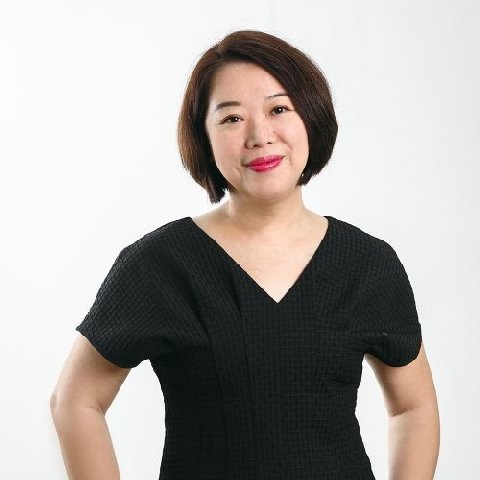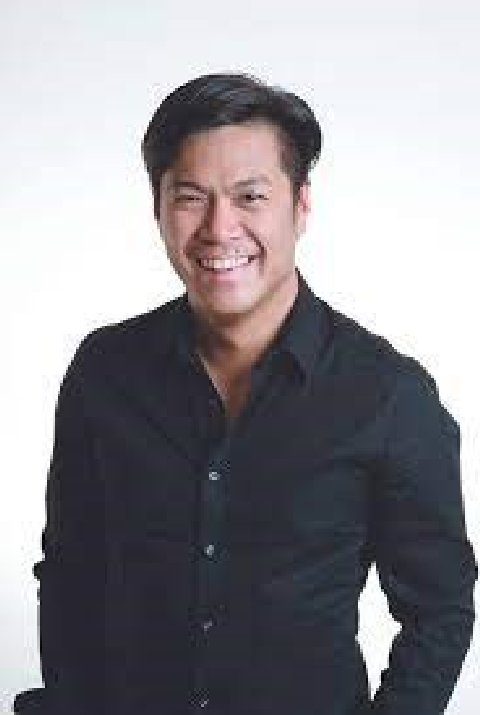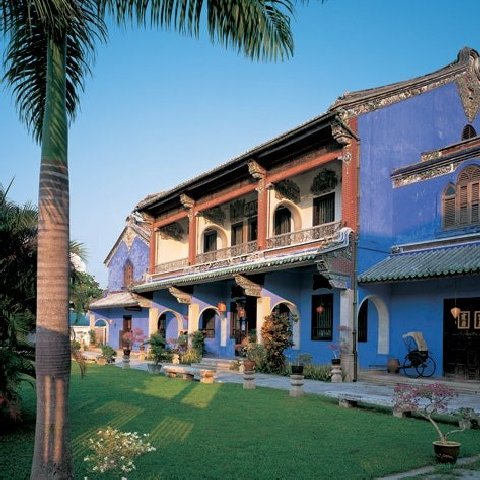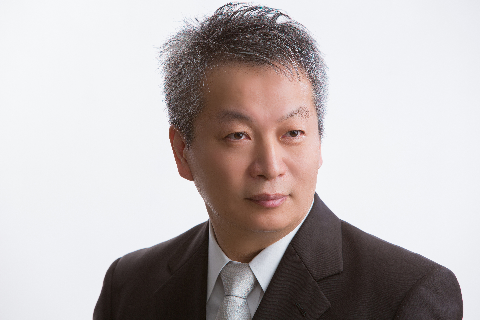
Susanna Saw
Susanna Saw: Kuala Lumpur was originally set to host the 2020 APYC but faced multiple
postponements. However, during the pandemic, we managed to recall some ex-APYC
singers and together with the APYC2020 batch, produced two virtual videos. This
was to help everyone to stay in contact, to uplift and encourage each other
with all the wonderful singers during those challenging times.
Salutaris conducted by Chi Hoe Mak:
(1) World
Choral Day 2022 - Asia Pacific Youth Choir - YouTube
Composed and conducted by Dr Tracy Wong:
(1) World
Choral Day 2022 - Asia Pacific Youth Choir - YouTube
The Asia Pacific Youth Choir is the brainchild of the
International Federation for Choral Music (IFCM) and we are grateful for the
support from Emily KUO, President of IFCM, and also the founder of APYC, and
Yoshi Egawa, Co-ordinator for APYC. We are grateful for their guidance and with
their support all these years, the APYC can continue providing opportunities
and nurture talents from the Asia-Pacific region.
We approached Penang’s Georgetown Festival for
support, and they agreed to host 2023 APYC. Penang is also Chi Hoe and my
hometown, and Chi Hoe has his adult choir there, which made local logistics
easier.
Chi Hoe Mak: Being local, my choir members and I assisted with transportation and
looking after the participants. We also decided to include a significant
Malaysian program in the 2023 APYC. This was a unique opportunity to expose
participants from other parts of the Asia Pacific to Malaysian music, which had
not been done to this extent before.

The Asia Pacific Youth Choir 2023, Penang, Malaysia
Teréz Tóth: Can you tell us more about the selection process for both singers and
the repertoire for APYC?
Yoshihiro Egawa:
Auditions are open annually and are managed by the Asia Pacific Choir
Council. Singers from different regions send in their applications and
recordings along with their CVs. A committee then selects the singers, with
five panels reviewing the auditions.
As for the repertoire, each conductor has the freedom to select the pieces they want to perform, with the aim of creating
coherent and artistically sound program.
Susanna Saw: There are no selection criteria for song selection. Each year, APYC
takes place in a different country, and the host country is responsible for
selecting their own conductors. These conductors then have the autonomy to
choose songs they want to perform. The Asia Pacific Council Members collaborate
with the host country in selecting the conductor for the event. Also, in the
Asia Pacific Choir Council, the working committee of APYC we review the
criteria for audition every year.
Chi Hoe Mak: It’s essential to balance the
program with both Western and Asian pieces. This year, we aimed for a unique
combination of both, including pieces from Europe and Canada. We mixed and
matched these pieces to create an exciting and different sound for the
audience. Tracy, who had participated in the first batch, is an alumna of APYC.
She possesses a deep understanding of both the process and the cultural nuances
involved. This is an important aspect, though it has evolved slightly over
time. Singers hail from various countries, and we have less than a week to
bring everything together since we only have a few days for rehearsals. Our
initial step is to make sure everyone understands the importance of timeline
and the timeframe. Following that, we discuss the musical program we intend to
perform. This year we were keen on incorporating a Malaysian program, a unique
opportunity to educate and expose choristers from various parts of the Asia-Pacific
region to Malaysian music. Historically, there may have been one or two
Malaysian pieces, but never to the extent we’ve aimed for. Tracy and I
introduced our well-prepared Malaysian choral music arrangements into the
program.
Dr Tracy Wong: Indeed, it has been twelve years, and revisiting this experience after
such a long time has been truly special. Our focus is on the choral compositions
and arrangements we’ve chosen, which are either inspired by or consist of folk
songs from various Malaysian communities. These songs encompass not only the
Malay but also the diaspora communities. When we sing Malaysian songs, our
Indonesian friends might notice similarities and say, „this is Indonesian; only
the lyrics differ”. This exchange of music among different countries is a
result of the diaspora in the region. Additionally, we’ve included music from
indigenous Borneo. One of our Bornean singers shared her experiences singing
solo. Also, we had included the program the unique tonality of Eurasian
Portuguese singing.
Listen to Jauh/Dekat
(Far/Near) by
Tracy Wong, cond. Tracy Wong, live recording, on 22 July 2023, at The Blue
Mansion in Penang, Malaysia (Retrieved: IFCM -
International Federation for Choral Music 01 October, 2023)

Dr Tracy Wong
Chi Hoe Mak: We aimed for a well-balanced program that featured a diverse array of
music. We carefully curated our selection, including several pieces from
Europe. Our repertoire ranged from the English Renaissance era with pieces from
William Byrd, as well as a motet from Anton Bruckner. It also included three
pieces from Canada, for which we obtained special permission to perform
exclusively. This was significant as it marked the Asian premiere of these
works.

Chi Hoe Mak
Dr Tracy Wong: I was honoured to have three of my compositions in the repertoire.
These pieces were commissioned by Canadian choirs. They reflect the mix of the
musical influences I’ve had, one foot in the Asian and one foot in the Western
music training. I was always curious what it sounded in an Asian choir. So, I
was really lucky to have APYC who have sung them beautifully. Without saying
too many things you just pick up the music everyone understood. It was
artistically fine with them having similar expectations. And everyone helped
everyone else. That is how I make friends for life.
Listen
to Bersatu Senada (Together With One
Voice) by Tracy Wong, cond. Tracy Wong, live recording, on 22 July 2023,
at The Blue Mansion in Penang, Malaysia (Retrieved: IFCM -
International Federation for Choral Music 01 October, 2023)
Chi Hoe Mak: Additionally, we had a composition by Jacob Narverud, the American
composer. Out of the total of six Western pieces, the remaining selection was
dedicated to Malaysian compositions. This blend created a harmonious fusion of
East and West in our program.
We put a lot of thought into selecting pieces that
were not only new and exciting but also suited the singers’ vocal
abilities. We ensured that the chosen
pieces were a perfect match for their voices by assessing their performances
through online recordings they had sent us with their applications.
Dr Tracy Wong: When it came to the Canadian repertoire, I was very conscious of the
impact it would have on the singers’ learning process and how they could carry
that experience forward. Firstly, we focused on Canadian composers who were not
only currently active but also young, with a particular emphasis on female identifying
composers working within the realm of contemporary music. Our selection
encompassed standard Western choral SATB parts for one piece, while another
piece predominantly featured graphic notation. This latter aspect was
surprisingly new and challenging for most of the choir members.
In addition to these challenges, there were also
speaking parts and percussion elements, adding complexity for the singers. This
meant that our participants had to be more than just vocalists; they needed to
be independent musicians who took ownership of their music. It was an enriching
experience for everyone involved, especially considering that half of the
participants were artists and choral conductors in their own communities. It
was fascinating to observe how they could apply what they learned, particularly
in terms of transferring leadership to the singers during rehearsals.
Moreover, the composers, who are close friends of
mine, sent short videos to express their gratitude to the performers for
bringing their music to life. This added another layer of connection for the
singers, making the experience of premiering this music even more meaningful.
Chi Hoe and I are both serve as vocal teachers,
working with students and singers in both community and academic settings. It’s
challenging to separate our pedagogical philosophies from our artistic ones.
While I can’t speak for Chi Hoe, I often find myself asking „What do I want my
teachers to walk away with?”.
Those who have expressed the importance of setting the
stage for the next generation hope that we will continue the work they have
initiated at APYC. This responsibility has always been sitting on my shoulders.
What message does a well-balanced program featuring diverse and high-quality
music across various styles and genres convey about or Malaysian community?
Drawing from my personal experiences of singing in
choirs where there is a mixed of seasoned and novice singers, I hope our
program encourages participants to explore and embrace new musical territories.
Additionally, by showcasing the work of talented composers, we aim to inspire a
strong sense of connection and appreciation for the musical legacy we are part
of.
Yoshihiro Egawa: The APYC was modelled after the World Youth Choir. Chi Hoe was a singer
in the World Youth Choir, which I believe is one of the most wonderful youth
choirs in the world. However, it is very competitive to join. That’s why I
believe we should establish the Asian Pacific Youth Choir, especially for young
people in the Asian Pacific region. Our mission is not only to sing together
and create beautiful music but also to discover choral compositions from the
Asian Pacific area. This allows both singers and conductors to gain a deeper
understanding of our cultural differences.
Chi Hoe Mak: I’d like to add that APYC serves as a vital choral ambassador for our
region. While it has always been a fantastic project, I think it is even more
important now as the world takes notice of our choral talents and the richness
of our choral culture in this region. We want to redirect the attention and
focus to the national choral community, showcasing the fantastic choral music
and singing emerging from this region. The singers themselves are ambassadors
of this great music, coming from places like Malaysia and Indonesia,
representing every corner of the Asia-Pacific region. It is a unique sound that
deserves global recognition. When we talk about European choirs and American
choirs, each continent has its own unique colour. It’s crucial for the world to
appreciate the uniqueness and artistry of singers and choirs from our region.
This is one of the reasons why APYC stand as a remarkably unique project.
Dr Tracy Wong: I think what Chi Hoe mentioned about being cultural ambassadors is one
of the highlights of our week. During rehearsals, we have cultural exchanges
among singers. Sometimes, even singers from the same country may not know each
other well. But when they return home, they can share their experiences with
their communities. We organize activities, like games that take just 10
minutes. For example, this year, one of our Japanese singers taught us how to
make origami. We had so much fun, laughing, chatting, and doing origami
together.
Teréz Tóth: How did you overcome the obvious obstacle of language differences
among the participants? More specifically, do you benefit the language and
cultural diversity of the APYC2023 members?
Chi Hoe Mak: All rehearsals are conducted in English. Some singers may not have been
very confident with English, but everyone helped each other. It’s been a
wonderfully supportive community. This year, APYC incorporated an outreach
program for the first time. We visited public schools in Penang, delivering
one-and-a-half hour sessions to educate students about the importance of giving
back to society. Music has the power to transcend the concert hall and
impact the community. Some children really enjoyed the program, and it showed
how music can touch so many lives, even in schools. We taught the young singers
how to teach music to children, inspiring them to continue this legacy. This
outreach program was a significant addition to the APYC program.
Tracy Wong: While the conducting language is obviously English, the songs we sing
may not predominantly be in English. We’ve found it easy to communicate with a
group of Asian singers. We even share similarities in language structure and
pronunciation.
Teréz Tóth: Finally, can you tell us more about the special location, Georgetown in
Penang island and the venues for APYC2023?
Susanna Saw: Chi Hoe and I are both from Penang, and while we may not have the
grandest concert halls, we can offer our hospitality, warmth, and the love of
the Penang community. This aspect was particularly meaningful because the
places and venues we used were all beautiful and historically significant. One
of the venues, the Majestic Theatre Penang, was an old movie theatre that had
been converted into an event space. While
the other was one of Southeast Asia’s most well-preserved historical buildings
from the 19th century, famously known as the Blue Mansion. The owner of the
Blue Mansion thought it would be wonderful to have a group of singers
performing in the courtyard. Surprisingly, it turned out to be the best concert
hall – the sound was natural. The atmosphere was warm in terms of both
temperature and the spirit. The Blue Mansion even served traditional Malaysian
tea, which was prepared by the owner of the mansion, and the audience
thoroughly enjoyed it.

The Blue Mansion, Penang
Chi Hoe
Mak: It was the last concert, so everyone became very emotional. It was a truly human experience, witnessing
the power and testament of music. A group of young people who had been
strangers just a couple of days ago had become like family.





